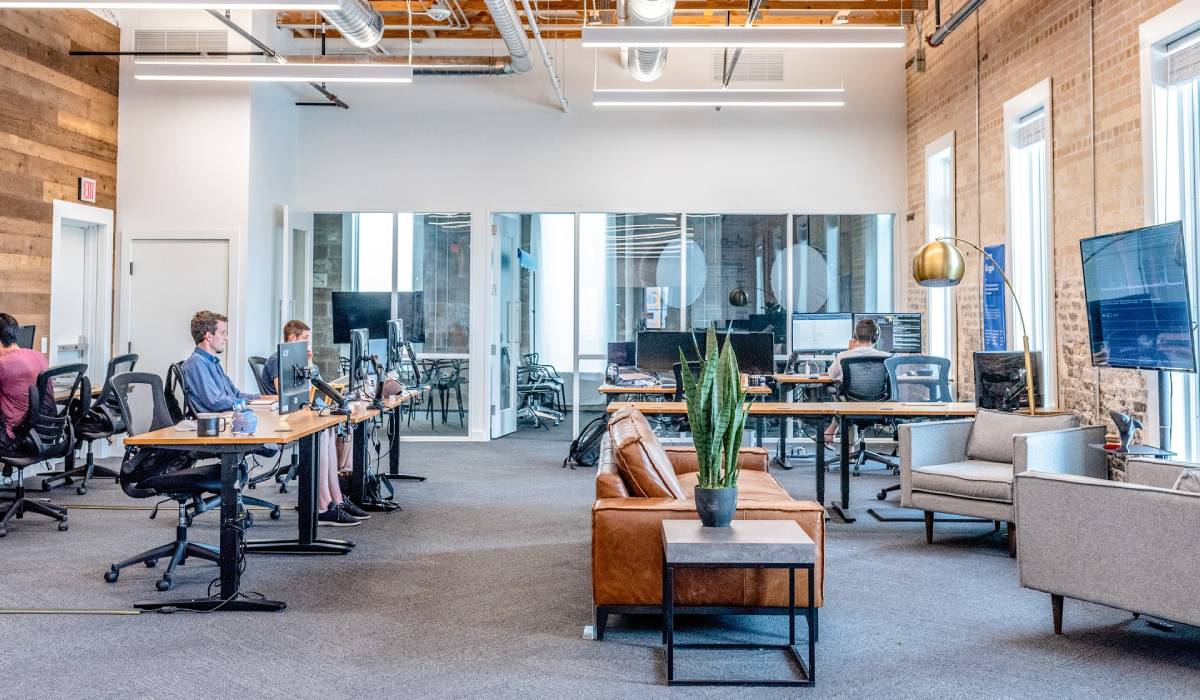
How To Grow Your Office With Flexible Office Space
Demand for office space has been inconsistent, to say the least, over the last few years. But finally, businesses are beginning to shift back towards semi-normal operations, and implement long-delayed plans for workforce and business expansion.
But employers are understandably cautious about fully committing to such plans, given the many questions about the short- to mid-term prospects for the economy, and the health of the commercial real estate market. Thus, many are leery of committing to expanding their offices, for fear of being left in a lurch if downsizing is necessary and commercial real estate values have declined.
This is why an increasing number of businesses are turning to flexible office space, or “flex space.” Flex space is office space which is modularized so that it can be adapted to changing work environments. A space can be transitioned from a dense collection of cubicles to a collaborative space to an open-air floor plan, depending on your needs.
More broadly, flex space is office space leased from a business which offers office suites and coworking spaces, with many businesses all within the same footprint. This allows business owners to scale up and down as the number of employees working in-office full-time or on a hybrid schedule fluctuates.
Flex space has always been popular with small businesses and owners who did not want to deal with the overhead of buying or leasing full commercial properties.
But how can established businesses which wish to avoid the potential liability of signing long-term commercial leases mesh flex space into their existing real estate portfolios?
Businesses typically follow a gradual, 3-stage adoption process which allows them to evaluate and scale into adoption of flex spaces:
Learning Phase
Businesses start out by leasing a small amount of space to meet some specific need which has arisen, which can’t be addressed with existing office space—hiring a high-value employee in another region, exceeding the capacity of local office space, or to handle employee overflow when downsizing and/or consolidating local office space.
Growth Phase
At this point, businesses are no longer taking an ad-hoc approach to the use of flex space, and flex space no longer makes up only a tiny minority of their total footprint. Such businesses are still driven by the necessity of addressing specific use cases, but have become more regimented and structured in their use—formalized policies have been put in place by HR, and there’s the beginning of a clear plan for increased use of flex space.
Strategic Phase
In the strategic phase, businesses have a fully formalized and systemic approach to the use, procurement, and reduction in the use of flex space. Additionally, technological solutions have been adopted or are being adopted to create a truly streamlined and seamless experience for employees and clients.
Businesses adopting flex space have found multiple structural approaches to incorporating flex spaces, with 3 being:
Hub & Remote
For businesses that have no minimum office space size, many opt to have a single flex space which serves as their operations center, while allowing more remote employees, and those with greater flexibility needs, to work remotely or on a hybrid model.
Co-Location with Flex Space
Those with moderate footprint needs make an existing commercial site their base of operations, with a secondary flex space serving as a secondary, middle- to large-scale hub. Additional tertiary flex spaces are incorporated as needed.
Flex Leases
Businesses which have fully committed to the flex space model will seek to incorporate flexible space options into a lease agreement, allowing for maximum flexibility, while meeting large-scale needs.
There is still a great deal of volatility in the adoption of flex space, and the trends we’re seeing will likely change in the next couple of years, as business leaders explore their options, before committing to full-scale strategies. The availability of flex space may diminish rapidly as businesses recognize the trend towards flex space, and business owner and managers are advised to begin planning for their next phase of growth as soon as possible.



